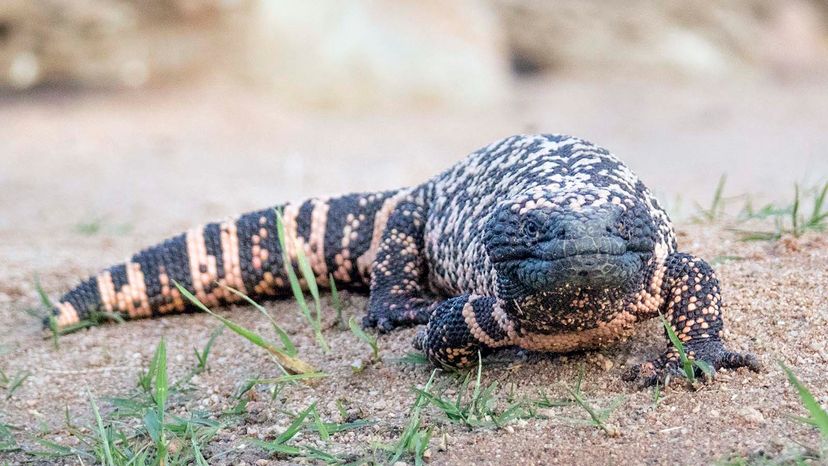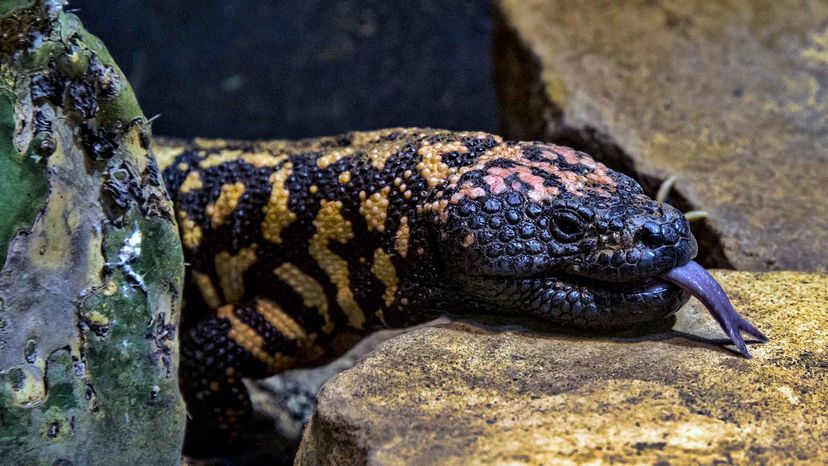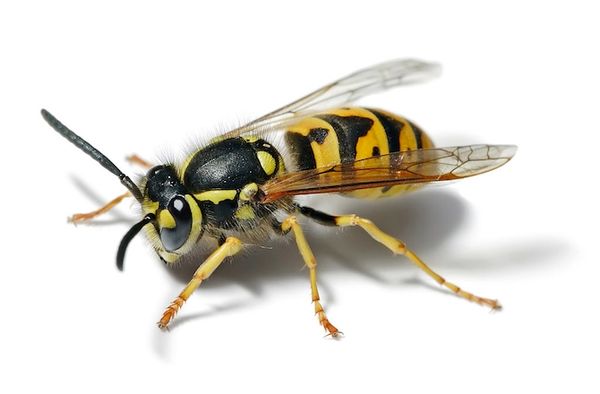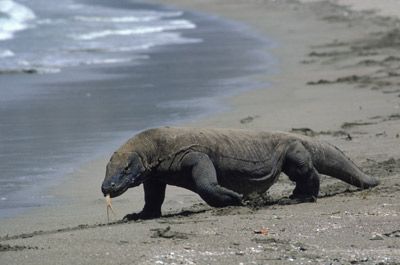Wild Gila monsters are rather stingy with their venom. It's reserved for self-defense purposes, a weapon the lizards deploy against coyotes, birds of prey and overcurious humans. (Keep your hands to yourself, folks.)
On the flip side, there's usually no need for venom when Gilas go hunting. Because Heloderma suspectum eats things that can be subdued without it.
"Adult Gila monsters are near exclusive raiders of vertebrate nests ... eating quail eggs, rabbit pups, rodent pups, lizard eggs and tortoise eggs," says DeNardo. Less is known about the diets of baby Gilas, but they seem to have a taste for eggs laid by smaller lizards.
Hatchling Gila monsters were the focus of a 2018 paper DeNardo coauthored. The lizards are committed homebodies, rarely leaving the safety and comfort of burrows or rocky dens. Unable to warm themselves like humans do, Gila monsters derive heat from their surroundings. Their ideal body temperature is about 84 degrees Fahrenheit (29 degrees Celsius).
"In the summer, underground temperatures are very close to this ... throughout the day and night," DeNardo says. "Thus, the burrow provides a very good environment for the Gila monster."
Come wintertime, the thermometer plummets. Even though burrows tend to remain warmer than the outside air, they may drop to temperatures of just 54 degrees Fahrenheit (12 degrees Celsius) during the cold months.
These cold spells, while tolerable, pose logistical problems for infant Gila monsters. Females lay clutches of three to nine eggs in midsummer. Deposited underground, their eggs hatch during the fall — when the desert grows chilly.
By observing artificially warmed eggs and a wild clutch found near a construction site, DeNardo and his 2018 co-authors realized Gila monsters practice "overwintering." Food is hard to come by in the autumn season. So newborn babies stay put for months on end until the weather outside gets warmer and menu options increase. Only then do hatchlings seek out their first meals.
Now we'd be remiss if we didn't mention the prequel to egg-laying: mating behavior.
"If they come into contact with each other during the breeding season [early summer], males will fight," DeNardo says. "The battle is mostly a wrestling match, but they can inflict wounds with their bites, often on the tops of the head." As their bodies intertwine, each combatant tries to flip his rival over.
Full-contact sports aren't just for people, you know.




